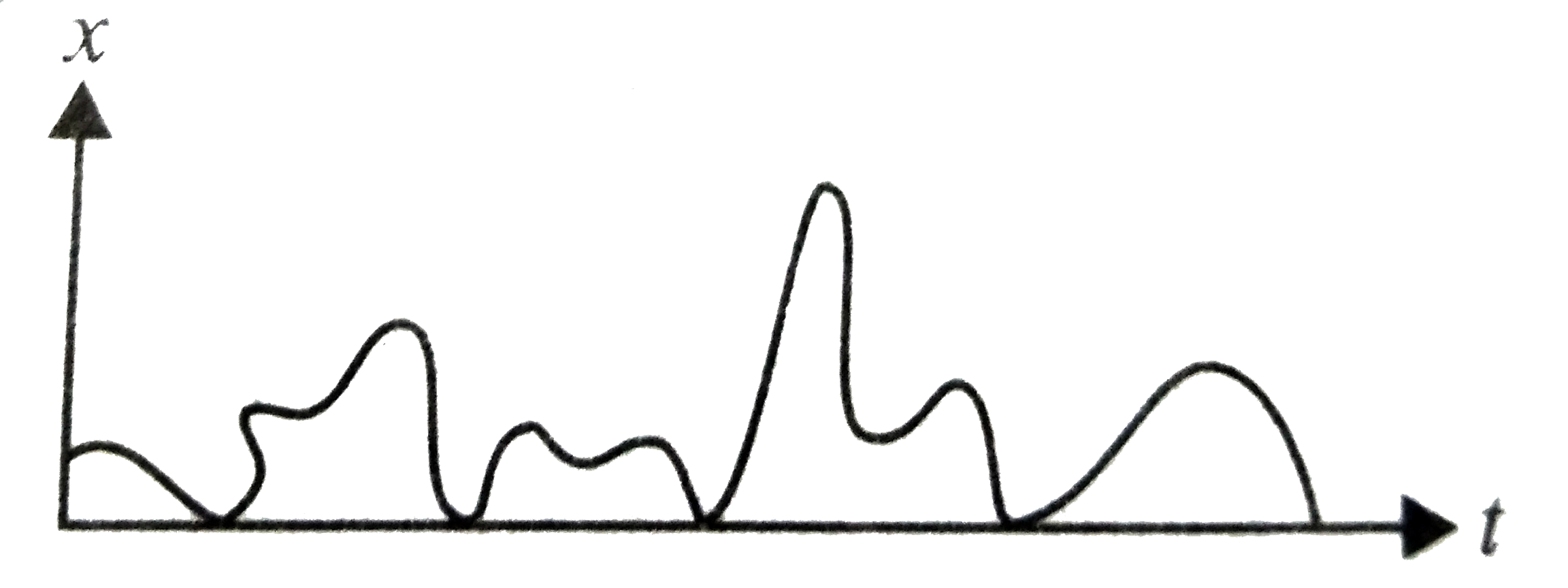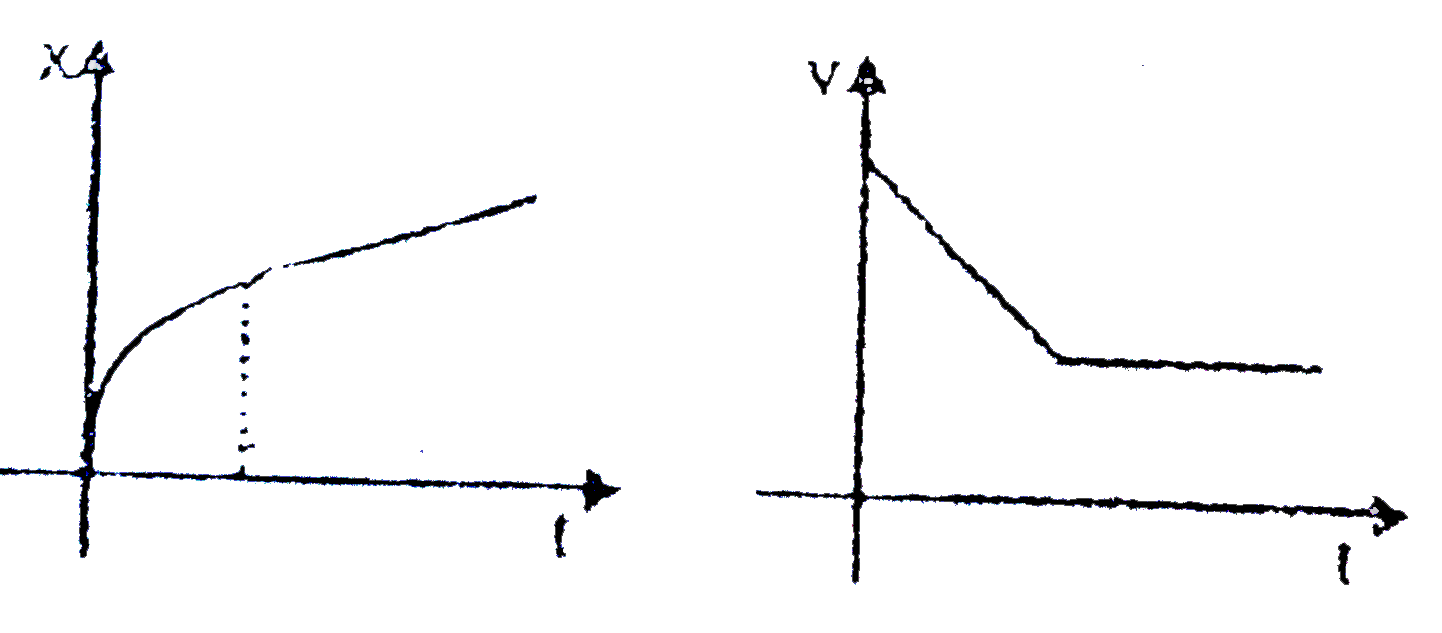Which of the following x-t graphs does not represent periodic motion?




The correct Answer is:B
To determine which of the given x-t graphs does not represent periodic motion, we need to understand the characteristics of periodic motion. Periodic motion is defined as motion that repeats itself at regular intervals, known as the time period (T).
1. Understanding Periodic Motion:
- Periodic motion is characterized by a repeating cycle. This means that after a certain time period (T), the object returns to its original position and state.
- Examples include the motion of a pendulum or a mass on a spring, where the motion is predictable and repeats at regular intervals.
2. Analyzing the Graphs:
- We need to look closely at each graph provided in the options to see if they exhibit the characteristics of periodic motion.
- A graph that represents periodic motion will show a consistent pattern that repeats over time.
3. Identifying Non-Periodic Motion:
- If a graph shows a motion that does not repeat itself, or if the time intervals between similar positions are not consistent, then it does not represent periodic motion.
- For example, a graph that shows a zigzag pattern or random fluctuations without returning to the same position at regular intervals would indicate non-periodic motion.
4. Conclusion:
- After analyzing the graphs, we find that one of the options (let's say Option 2) shows a zigzag pattern that does not repeat itself consistently. This indicates that the motion is not periodic, as there is no fixed time period or repeating path.
5. Final Answer:
- Therefore, the graph that does not represent periodic motion is Option 2.
- Periodic motion is characterized by a repeating cycle. This means that after a certain time period (T), the object returns to its original position and state.
- Examples include the motion of a pendulum or a mass on a spring, where the motion is predictable and repeats at regular intervals.
- We need to look closely at each graph provided in the options to see if they exhibit the characteristics of periodic motion.
- A graph that represents periodic motion will show a consistent pattern that repeats over time.
- If a graph shows a motion that does not repeat itself, or if the time intervals between similar positions are not consistent, then it does not represent periodic motion.
- For example, a graph that shows a zigzag pattern or random fluctuations without returning to the same position at regular intervals would indicate non-periodic motion.
- After analyzing the graphs, we find that one of the options (let's say Option 2) shows a zigzag pattern that does not repeat itself consistently. This indicates that the motion is not periodic, as there is no fixed time period or repeating path.
- Therefore, the graph that does not represent periodic motion is Option 2.
Topper's Solved these Questions
- OSCILLATIONS Book:NCERT FINGERTIPSChapter:OSCILLATIONS Exercise:Simple Harmonic Motion
Explore 17 Videos
- OSCILLATIONS Book:NCERT FINGERTIPSChapter:OSCILLATIONS Exercise:MCQs
Explore 2 Videos
- MOTION IN A STRAIGHT LINEBook:NCERT FINGERTIPSChapter:MOTION IN A STRAIGHT LINEExercise:Assertion And Reason
Explore 15 Videos
- PHYSICAL WORLDBook:NCERT FINGERTIPSChapter:PHYSICAL WORLDExercise:Assertion And Reason
Explore 10 Videos
Similar Questions
Knowledge Check
Which of the following velocity-time graphs does not represent motion in one dimension?
A B
B C
C D
D
Which of the following pairs of graphs does not represent the motion of he same particle in the same interval (curves are parabollic):−
A B
B C
C D
D
Which of the following functions of time represent periodic motion ?
Asinωt+cosωt,Be−ωtClog(ωt)DNone of these
Which of the following graphs cannot represent one dimensional motion of a particle?
View SolutionA particle is thrown vertically upwards with a velocity v. It returns to the ground in time T. which of the following graphs correctly represents the motion ?
View SolutionWhich of the following expression does not represent simple harmonic motion?
View SolutionWhich of the following graphs best represents the motion of a raindrop?
View SolutionWhich of the following velocity-time graphs (v−tgraph) represent uniform motion
View Solution

